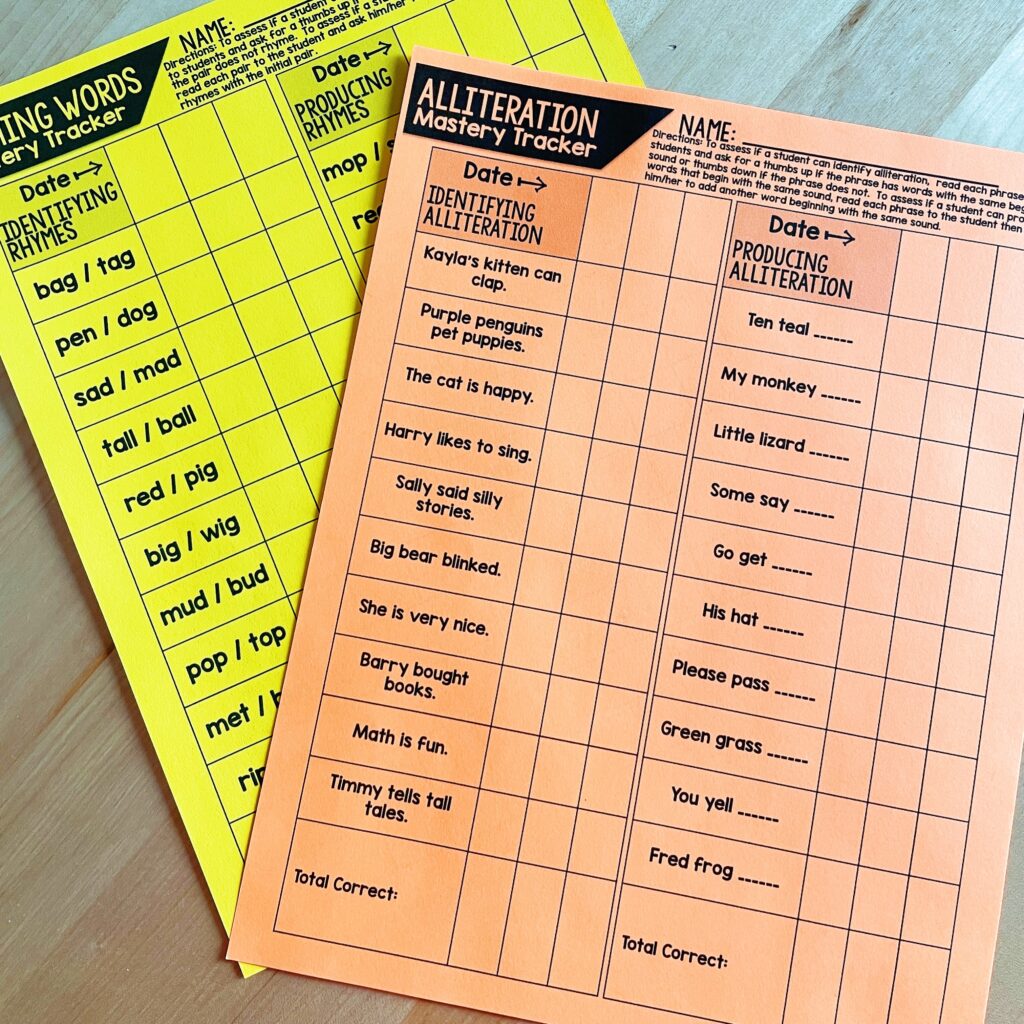How to Teach Small Group Reading with Limited Resources
Let’s start off with a moment of honesty friends… Teaching reading in small groups can be challenging! Behavior management, prepping materials, finding resources, planning, and determining what your other students (who you aren’t working with currently) will be doing are just the tip of the iceberg.
Throw in having access to limited resources from your school and it quickly starts to feel too overwhelming. Well, friend, today I want to share some ways we can get creative and still be effective with small group literacy even with minimal resources. Truthfully, you don’t all the bells and whistles and tons of STUFF to run them effectively. You really just need some creativity and effective practices.

Start with a diagnostic assessment.
It may seem silly to say, but it’s worth saying anyway! Before starting any small group reading instruction, it’s important to assess your students’ current abilities – phonological awareness, letter knowledge, high-frequency words, and decoding are a few of the things I start with at the B.O.Y. and how far we go depends on how the assessments are going.

These types of assessments will help you identify students’ strengths and weaknesses, which will inform your teaching strategies. This is super important for all teachers, but especially if you have access to limited resources.
Knowing exactly where your students are and what they need will help you pinpoint the exact resources you will need to help them rather than searching for allll the things!
Choose the right books (decodable, leveled or other).
Once you have identified where your students are, you can select books that are appropriate for their reading abilities. And sometimes, it may be no books at all because you are focusing on other pre-reading skills!
My go to for most Kindergarten students are decodable readers. I share more about why decodable readers are the perfect fit on this blog post and also address my thoughts on leveled texts.

I’ve got tons of affordable decodable reader options here – and what is SUPER NICE about these options are you will have books for all of the readers in your class, can send them home for students to read with families because they’re just printables, and you can use them year after year by just printing new books.
When you’ve got limited resources, the last thing you want to do is have to spend time hunting down decodable readers from all over the place of investing tons of money into pre-printed and bound books that limit the number of books you have or what you can do with them.
Bring in shared reading.
Shared reading is a collaborative approach to reading where the teacher and students read together and discuss the text. Shared reading can be particularly effective with limited resources because you can use text book for the entire group.
I love the flexibility that shared reading offers because you can use a text that you print or project and it doesn’t have to be an entire book! In fact, I love building these strong habits with weekly poems that allow students to build these foundational skills in bite-sized chunks!
Shared reading is the perfect time to focus on building reading fluency, decoding skills, and comprehension.
Incorporate word work during groups and as a center.
Last week I shared some simple and effective ideas for word work in the classroom. Word work activities can help students develop phonics and vocabulary skills, and they can be done using a variety of resources, including word sorts, word walls, and word games.
These are perfect for the word work portion of your small group lesson, but can also be used as a center. We are all about activities that have multiple uses around here!
Again, you don’t need all the bells and whistles here. A lot of these activities can be made by just printing them off, using note cards, or laminating games that you use year after year.
Provide independent reading time.
Independent reading is an important part of any reading program, and it can be particularly beneficial for students in small group settings. I know there are those out there that will say this is a waste of time, but I wholeheartedly disagree.
Students need time to interact with books, turn the pages, look at the pictures, find words they know and learn to enjoy books without the context of a lesson format.
I love to incorporate DEAR (drop everything and read) time as a transition back into the classroom after an active time like recess or PE. It only takes a few minutes and allows the students’ bodies to calm while exploring books. It’s a win-win!
One final cheer for you teacher friend! You don’t need lots of THINGS to run effective literacy instruction or small groups. Do the best with what you have and find inexpensive resources that allow for multiple uses. You are doing amazing things!


